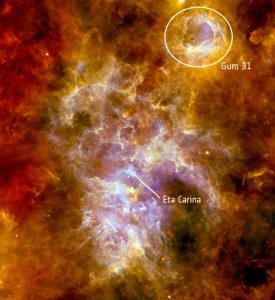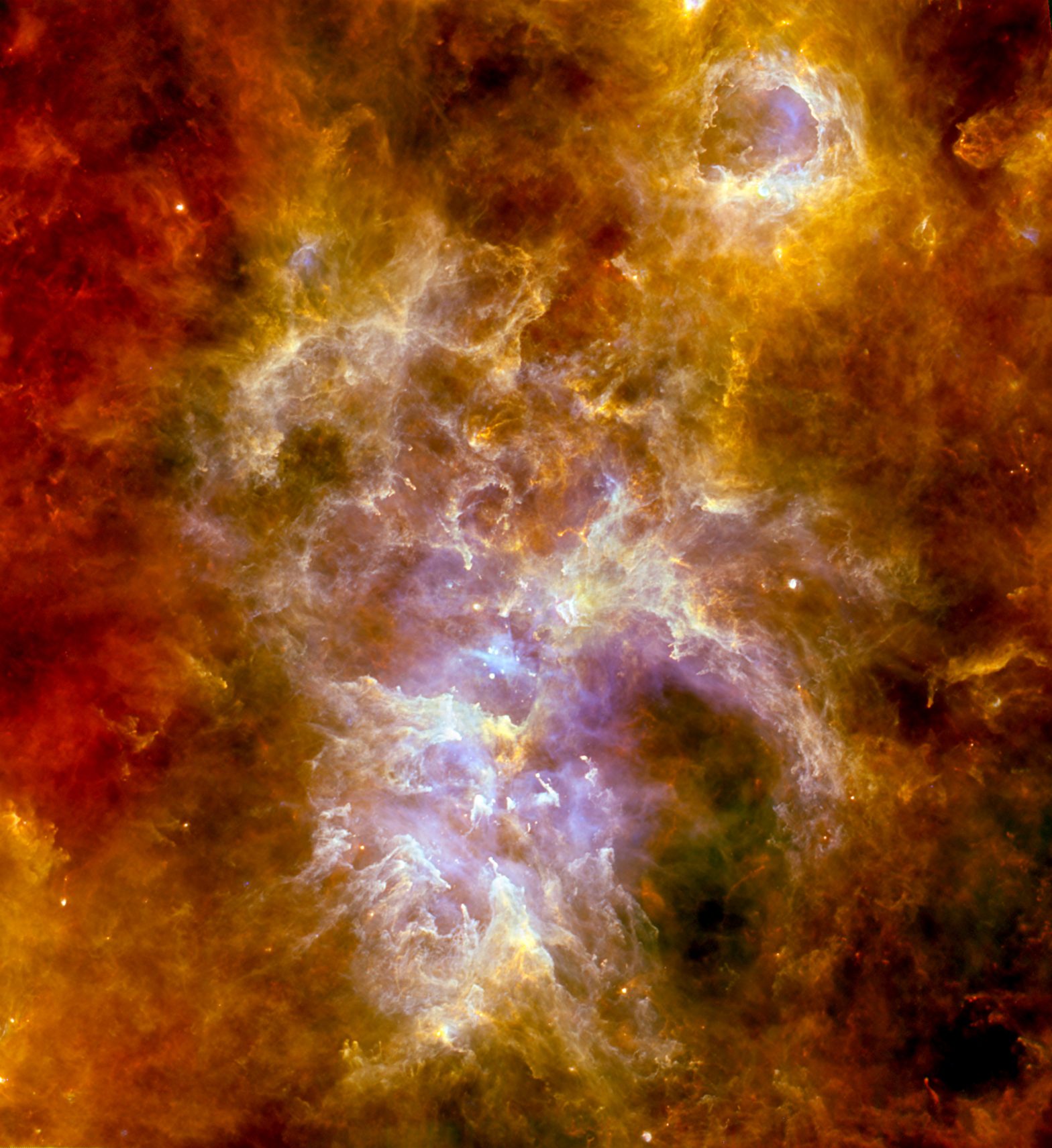| Basic Information | |
| What is this? | A massive cloud of gas and dust in which stars are forming |
| Where is it in the sky? | In the constellation of Carina |
| How big is it? | The image shows a region around 300 across, which contains enough gas and dust to make almost a million Suns |
| How far away is it? | Around 6500 light years |
| What do the colours represent? | Bluer material is warmer, being heated by massive stars, while the redder areas show much colder material. |
Downloads
See this object in:

Giant bubbles, towering pillars and cascading clouds of dust and gas fill the star-forming nursery of the Carina Nebula seen here in a stunning new view from Herschel.
The Carina Nebula is some 7500 lightyears from Earth and hosts some of the most massive and luminous stars in our Galaxy, including the double-star system eta Carinae, which boasts over 100 times the mass of our Sun.
The total amount of gas and dust traced by ESA’s Herschel space observatory in this image is equivalent to some 650,000 Suns. Including the warmer gas, which is not seen by Herschel, the total mass of the entire complex may be as high as 900,000 Suns.
Surrounding pillars of gas and dust point towards the bright central region of nebulosity – home to eta Carinae and numerous other massive stars which are not themselves seen here.
Eta Carina is so massive that it is several million times brighter than the Sun. This intense light, combined with strong stellar winds, carves the pillars, pushing away the surrounding material. As the surrounding material is compresse, it can trigger new gnerations of star formation
Above and to the left is a chaotic web of bubbles and broken bubble arcs molded by individual regions of star formation that have swept up shells of dense clouds around them.
At top right is the Gum 31 nebula, a giant bubble blown out of the surrounding dense clouds thanks to winds and radiation emitted by the young stellar cluster NGC 3324 that sits at its heart.
Detailed Information
Under pressure: Revealing the thermal and spatial structure of strongly irradiated clouds in the Carina Nebula, the nearest laboratory of massive star feedback
Preisbisch et al. (2012) A&A 541, A132 “Herschel far-infrared observations of the Carina Nebula complex. I. Introduction and global cloud structure” ; (astro-ph/1204.0627)
- “The delicate balance of star formation in the Carina Nebula” (ESA Science & Technology)
- Online Showcase of Herschel Images

